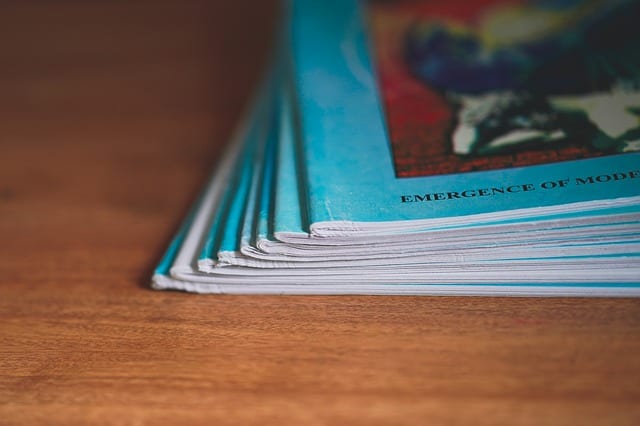
Image source – Pixabay
From our money bills and newspapers to etching and lithographed artworks, found in the biggest galleries in the world, uses the versatile medium of Print-Making. This artistic process of transferring, recreating, or creating designs requires working with tools and chemicals.
Print-making can initially be intimidating because of all the heavy industrial equipment that the process involves. But once you learn about the different aspects of it, it is quite straightforward!
What do you need to know about print-making?
The four basic types of print-making include Relief, intaglio, planographic, and stencil. An important thing that is however important is to know the safety measures that need you will have to take before you begin. The printmaking process includes the use of industrial solvents, chemicals, and equipment. This makes it imperative to understand the nuances of this medium before working with it.
The article below illustrates the various safety measures, along with types and processes of printmaking. This aims to cover all you need to know about printmaking, focusing mainly on the safety measures you will need to take before experimenting or working with this medium.
The two most common forms of print-making include etching and lithographs, also the earliest forms of print-making. Etching, a form of intaglio printmaking, is where a powerful acid is used to dissolve the negative spaces or the unprotected metal surface, required to create the final design.
Lithograph, a planographic method that uses a metal plate or a flat stone and an ink-resistant material to create the negative space or the empty portion of the design. The counter-etch solutions used in lithograph printmaking contain different acids and so necessary measures to work with it is something you can keep in mind given its toxic nature.
First, let’s look at the most common chemical compositions and effects of the different materials that you will be working with
- The chemicals that you usually find in various solvents include Gasoline, Kerosene, and mineral spirits. The purpose of these chemicals in printmaking is to dilute the medium, wash out or correcting the images, or the central design.
- The concentrated acids, Gum Arabic, and counter etch might have corrosive components- Hydrofluoric acid and phenol being the most dangerous to use. Dilute acid solutions over repeated or prolonged use can irritate the skin.
- Phenol, also known as carbolic acid, is something you will use while making lithographs to remove the grease from the stones. Metal plates, on the other hand are prepared with solvent-based vinyl lacquers.
- Denatured alcohol and lacquer thinner and other such volatile solvents should ideally be used sparingly.
- Solvent inks contain a mixture of 12% pigments, 18% binders, 70% solvents, and other additives and ethanol acting as the main solvent. Now the solvent tends to mix with the air surrounding it as it evaporates, creating a perfectly flammable atmosphere that might be created within the printmaking studio.
- Etching inks contain linseed oil, making them highly flammable as the content used in print-making is quite high. This is something that you will have to treat with caution.
- Dichromate salts found in fountain solutions are used in lithograph type print-making. This can lead to allergic reactions, skin irritation, skin and/or nasal ulceration, and sometimes over prolonged exposure might even lead to cancer.
- Rosin Mixtures and talc are substitutes usually used in print-making where the talc is usually contaminated with asbestos and silica contents.
- Something to keep in mind would be the benefits of using a brush. This is because airbrushing drawing materials or using spray enamel paints automatically becomes more hazardous given the possibility of inhalation of the same.
Storing and Ventilation
Given the risky and flammable nature of the solvents and the medium used, storage and ventilation become highly important
- Powerful ventilation is a must. A second ventilator is also an option in the event of the primary ventilation source failing to provide enough, you can never be too cautious!
- Chemicals have to be stored in their respective hazard-proofed cabinets that you can then classify based on flammability, acids, bleach, and other such categories of chemicals.
- Rags used for cleaning up spillage also need to be appropriately disposed of in specified containers
- It’s important to make sure that the solvent containers are not left open.
- Using the spray booth while using large amounts of certain materials is another effective way of ensuring safety.
Tools and process-related safety measures
- While carving, using soft and easy materials like the Black E-Z cut printing blocks, might help in preventing slips and minor accidents,
- Finding appropriate tools for student users is also another thing that can perhaps keep in mind. Using certain cutters that require the pulling motion rather than the pushing motion might minimize the danger. The disadvantage of these cutters is that they are typically made for right-handed people, so you will have to work with the traditional cutters if you are left-handed.
- Using bench hooks while carving helps in holding the blocks in their place and keeps the hands away from sharp tools. It primarily prevents slippage and gives better support.
- Caution in knowing how and where to hold the different materials can be kept in mind, for instance, how to hold the metal ruler in place while using the razor.
- There are special operating instructions for working with the guillotines and plate cutters
- Training from an instructor is also the best way to ensure safety and give you confidence in working with this new medium.
Personal safety and protective measures
- Wearing closed-toe shoes is a must in a printmaking studio as opposed to flip-flop’s, sandals, and open-toed shoes- similar to an industrial environment.
- Using personal protective gear is highly recommended. Make sure you have equipment such as gloves, an apron, and a respirator to begin with. Goggles and dust masks are also essential while working with toxic materials.
- When working with equipment and presses, make sure your hair is pulled back.
- Remember, while working with the power washer to have ear protection on.
- While handling photo-sensitive emulsion, emulsion sensitizer, and emulsion remover, protective gloves will have to be worn
- While working in a print-making studio, make sure you know where all the emergency exits are fire extinguishers are located- first-aid kits must be accessible to all.
- Ensure that any spills or debris is taken care of to prevent fall situations or unwanted accidents.
- In the event of direct contact of the acid with the eye, it is important to immediately run the water for 30 seconds to flush the unit. Post which, hold the eye open and wash for another fifteen minutes. If there is an injury, examination by a physician is necessary.
- The acid drip bottle should be treated with care, wearing a face shield for safety measure and making sure to wash hands right after using the bottle
- Another measure is not eating, drinking, smoking, or consuming alcoholic beverages inside the printmaking studio.
- Lastly, make sure you don’t leave any personal items unattended and to secure them in your locker.
Screen printing is another method used in print-making that is slightly less toxic as it mostly uses water-based materials.
The haze remover paste used in screen printing should be used with protective goggles and gloves as it contains strong alkaline which could burn the skin under prolonged exposure.
The safety measures to keep in mind while working with Photomechanical Printmaking is slightly different. Make sure not to not look directly into the light exposure unit as it emits strong UV light, proven to be harmful to the eyes. It is also important to make sure that the ventilation is turned on while processing the film in the darkroom. As mentioned above, wear goggles and gloves while working with the required chemicals.
Printmaking has evolved over the years from etching to the very many digital forms of printing. Although, printmaking is mostly used for mass production of media and creating replicas of originals, it can also be used to explore creativity. Many famous artists have explored this medium in creating artworks.
It can certainly be confusing at the start with having to pick which method of print-making is suitable for you. If the chemical aspect of it is worrying you, then I’d suggest starting with screen printing as it is the least complex of the lot. But, of course, the best way to find out is by experimenting with them all before finding out which of them works best for you.
The aforementioned are only some major safety measures you will have to keep in mind if you are new to printmaking or if it’s a medium you’re willing to explore. The best way to tackle that anxiety of trying something new is to prepare for it, and I hope this article does exactly that for you.
Once you check these off your safety measures on your list, all that’s left to do is have fun with the process!
